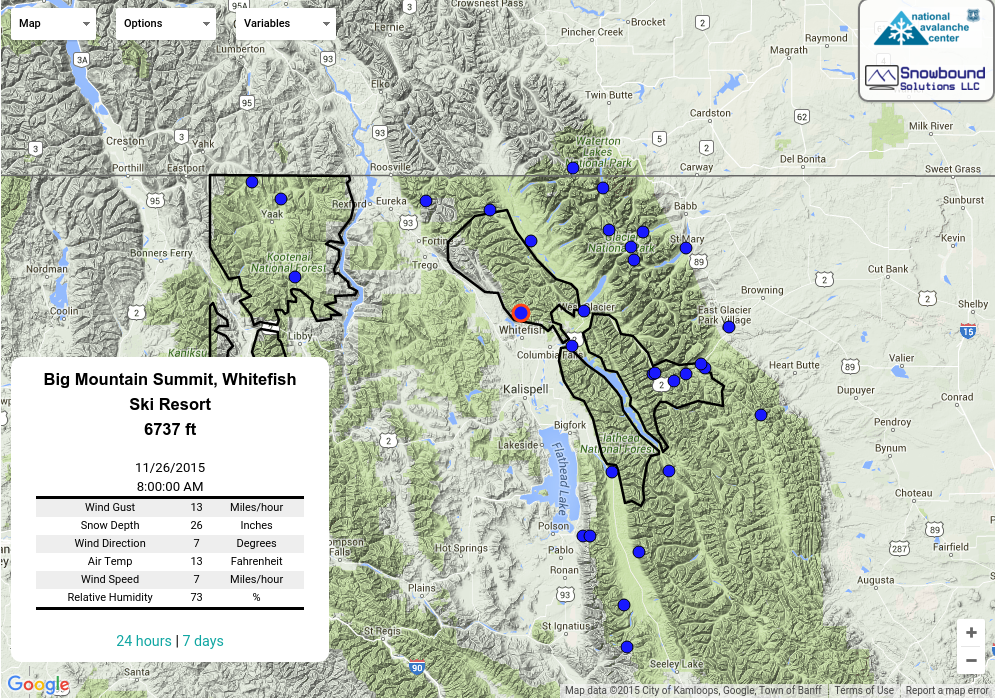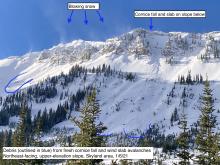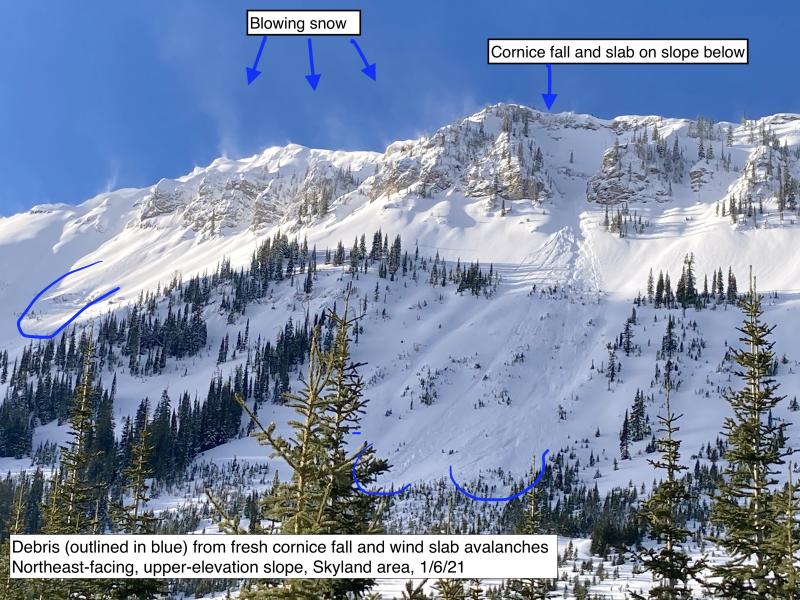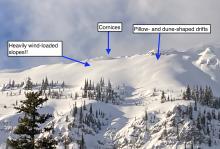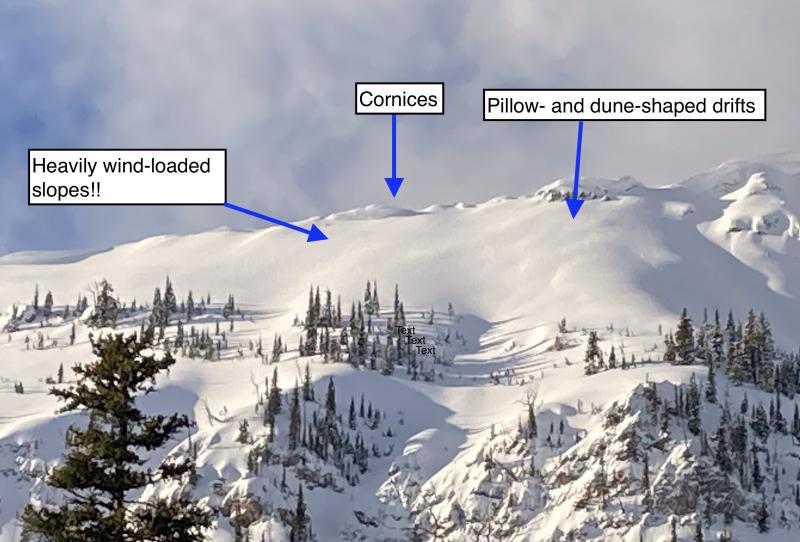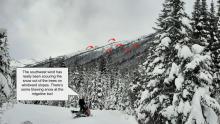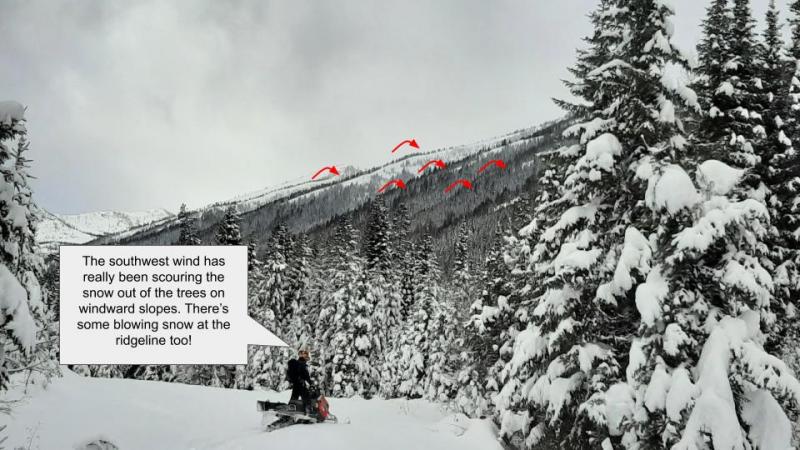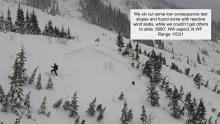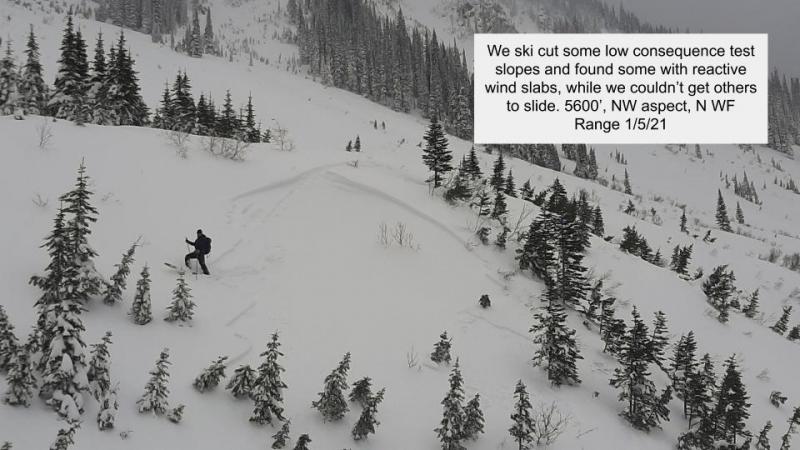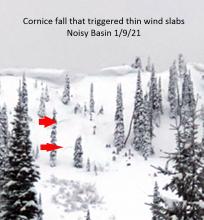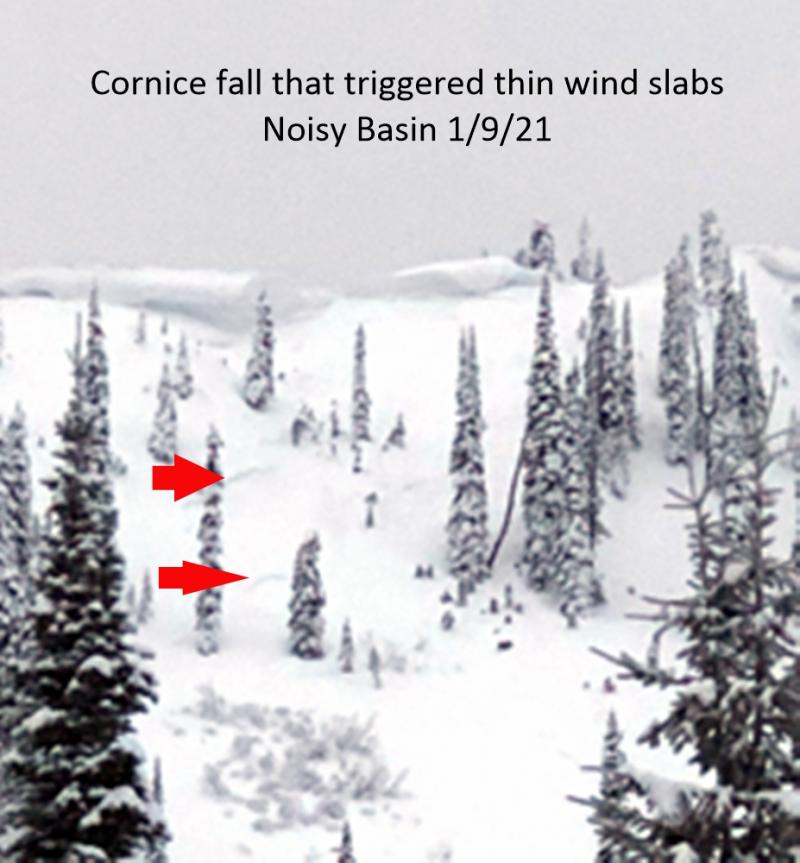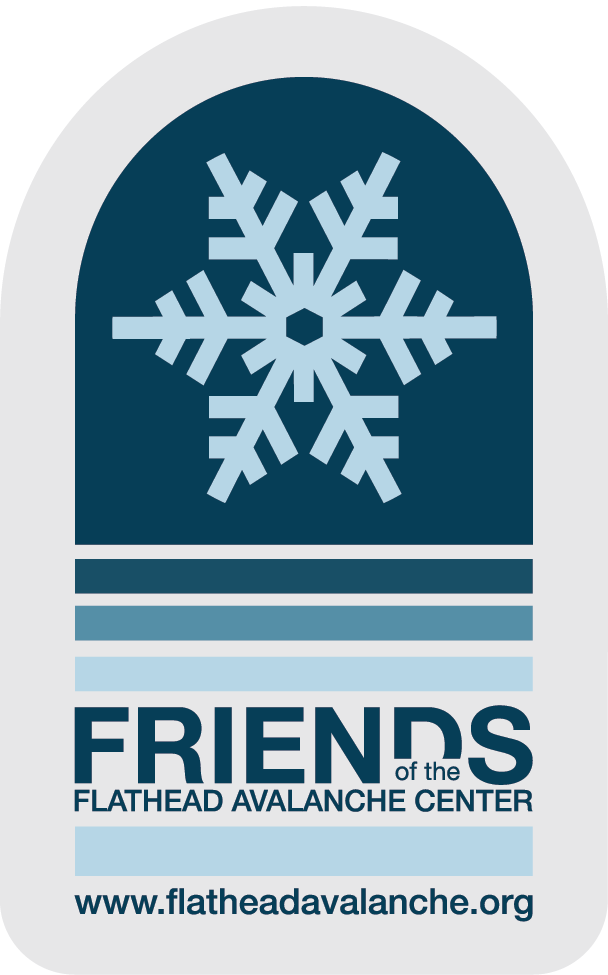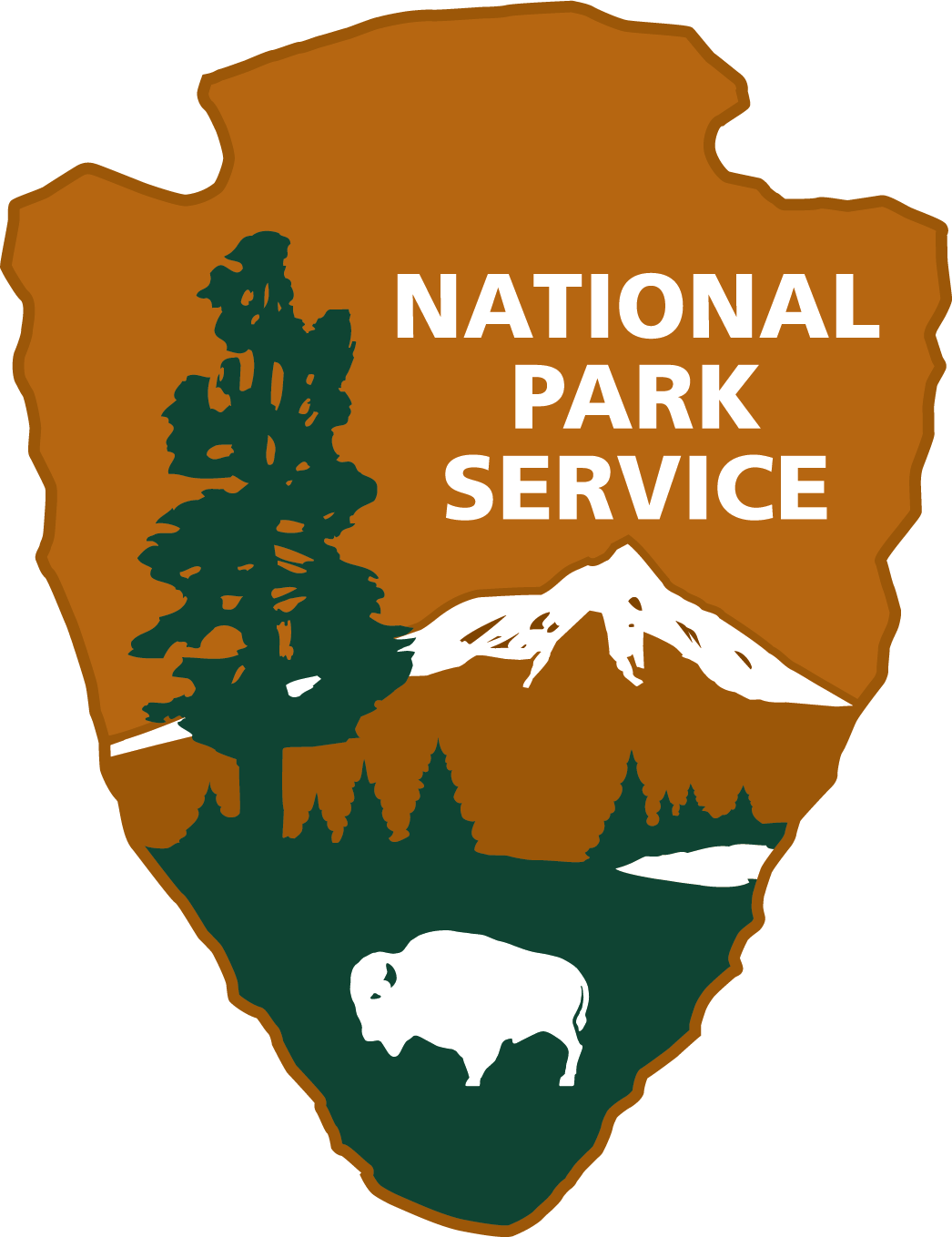| Thursday | Thursday Night | Friday | |
|---|---|---|---|
| Cloud Cover: | Mostly clear and cool. | Clear and cold. | Warming temperatures, increasing clouds with light snow. |
| Temperatures: | 11-18 deg. F. | -14-3 deg. F. | 19-32 deg. F. |
| Wind Direction: | East-Northeast | Southeast | South-Southeast |
| Wind Speed: | 5-8 gusts 16-20 | 4-5 | 5-6 |
| Snowfall: | 0 in. | 0 in. | 2-3 in. |
| Snow Line: |
Whitefish Range
Swan Range
Flathead Range and Glacier National Park
How to read the forecast
Several generations of wind slabs formed on multiple aspects over the past week. In some areas these slabs remain sensitive to human triggers. Wind loaded areas should be treated with respect given the variety of surfaces they formed on. The avalanche danger is MODERATE above 6000 feet and LOW below 6000 feet. Identify recently wind loaded slopes and avoid steep, exposed terrain where these slabs exist.

2. Moderate
?
Above 6500 ft.
1. Low
?
5000-6500 ft.
1. Low
?
3500-5000 ft.
- 1. Low
- 2. Moderate
- 3. Considerable
- 4. High
- 5. Extreme
-
Type ?
-
Aspect/Elevation ?

-
Likelihood ?CertainVery LikelyLikelyPossible
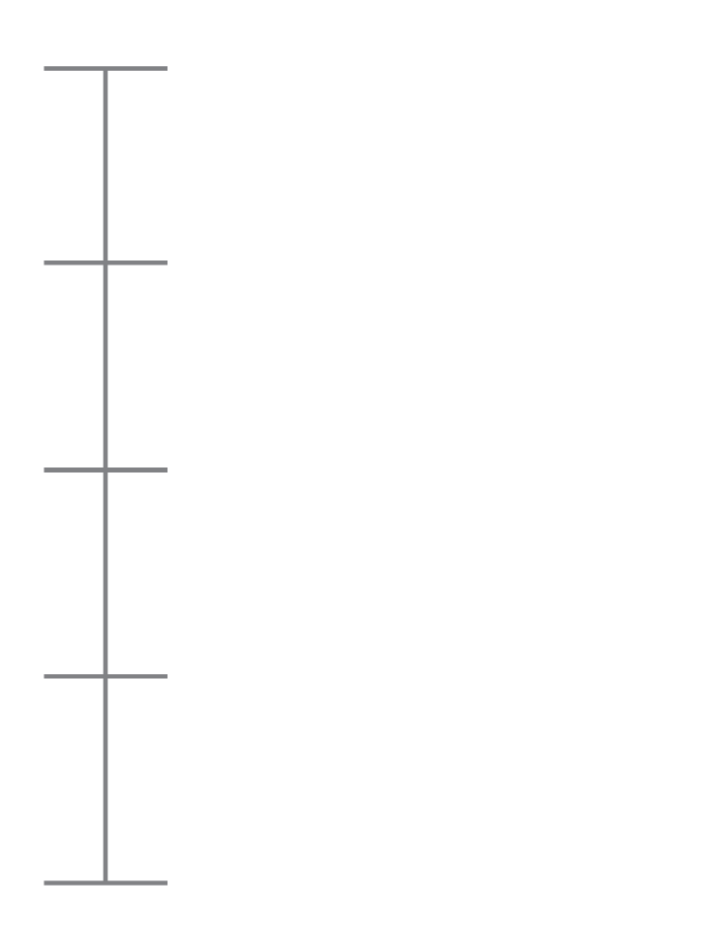 Unlikely
Unlikely -
Size ?HistoricVery LargeLargeSmall
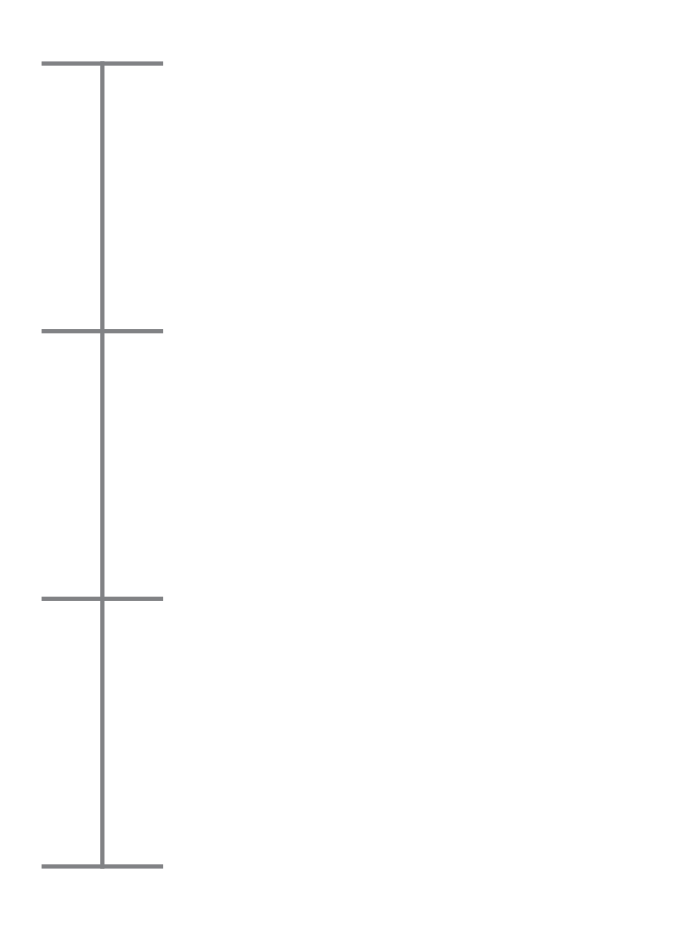
Even as wind speeds moderate and drifting snow ceases we will not be out of the woods today in regard to the wind slab problem. These slabs need time to settle and adjust. In some areas the wind drifted the snow onto weak, faceted surfaces and crusts that can further delay the time they need to strengthen. Look for smooth, rounded features on the snow surface. Since it's nearly impossible to determine the age or strength of a particular slab it is important to treat them all with respect. Watch for obvious signs of instability and avoid steep, exposed slopes where you expect to encounter recently formed wind slabs.
Relatively warm temperatures over the past few weeks helped to generally consolidate and strengthen our snow pack, but weak layers in all ranges of the snow pack did not simply disappear. Dig into the snow and look for weak, facets in the mid snow pack, isolated areas with buried surface hoar (1-1.5 feet from the surface), and/or sugary depth hoar near the ground. Where you find a weak snow pack structure terrain choice is the solution. Though the likelihood of triggering an avalanche on one of layers is low, the consequence is high. To lower the odds of triggering one of these deeper slides avoid steep slopes that have a shallow snow pack.
Wednesday: We were in the Six-Mile area in the Swan Range. East/northeast winds continued to drift snow onto leeward slopes. Isolated wind loaded pockets along the ridgeline produced shooting cracks and even fractures 14-16 inches deep from our weight. From a distance we could see a crown line on Hall Peak from an avalanche that likely occurred early in the week. The avalanche appeared to be on a wind loaded slope and stepped down to the ground. Distance and filled in debris made it difficult to estimate size or date of the avalanche.
Tuesday: Todd and Seth traveled up Lost Johnny to Hash Mountain in the Swan Range. Winds had shifted to the East, and although light, were increasing as the day went on. Previous wind loading was prevalent on East and North aspects, although slabs did not appear to be sensitive. Some strengthening is occurring in the snow pack, however, we still found concerning weak layers of buried surface hoar and facets around crusts. These layers were not sensitive and did not appear to be prone to propagation, but they easily could be in other locations. Adam was in the Big Slide area of the Southern Whitefish Range and also found some weak layers in the snow pack, but did not have any propagation. He did note some new surface hoar development.
Also on Tuesday, we received public observations from Running Rabbit Mountain and Cameahwait Mountain in the Flathead Range. Both reported signs of previous wind loading but no obvious signs of instability and no propagation in stability tests.
Monday: Erich and Guy traveled into the Tunnel Ridge area in the Flathead Range. They experienced strong southwest wind transporting snow to leeward aspects and even cross-loading ridges (video). They avoided wind loaded slopes, and noted the Jan. 19 crust with weak snow below it at elevations below about 6000 feet. They observed localized cracking along ridges, but observed no natural avalanche activity. BNSF Avalanche Safety toured in John F. Stevens Canyon. They noted active wind-loading onto easterly aspects above 6000 feet but did not observe any recent avalanche activity.
See below for all observations this season.
In the past 24 hours no new snow fell and the area saw partly cloudy skies and cold temperatures. Light north-northeast winds persisted with moderate to strong gusts. As of 5:00 a.m. temperatures above 6000 feet range from -4-3º F, and winds are out of north-northeast at 5-11 mph with gusts from 8-14 mph. For today, expect mostly clear skies with temperatures rising to the upper teens. Winds will blow out of the east and decrease to 5-10 mph. Tomorrow, temperatures will continue to climb and clouds will move in early with light snow spreading across the region.
| 0600 temperature: | -4-3 deg. F. |
| Max. temperature in the last 24 hours: | 5-16 deg. F. |
| Average wind direction during the last 24 hours: | N/NE |
| Average wind speed during the last 24 hours: | 5-10 mph |
| Maximum wind gust in the last 24 hours: | 13-29 mph |
| New snowfall in the last 24 hours: | 0 inches |
| Total snow depth: | 53-68 inches |
This advisory applies only to backcountry areas outside established ski area boundaries. This advisory describes general avalanche conditions and local variations always occur. This advisory expires at midnight on the posted day unless otherwise noted. The information in this advisory is provided by the USDA Forest Service who is solely responsible for its content.

